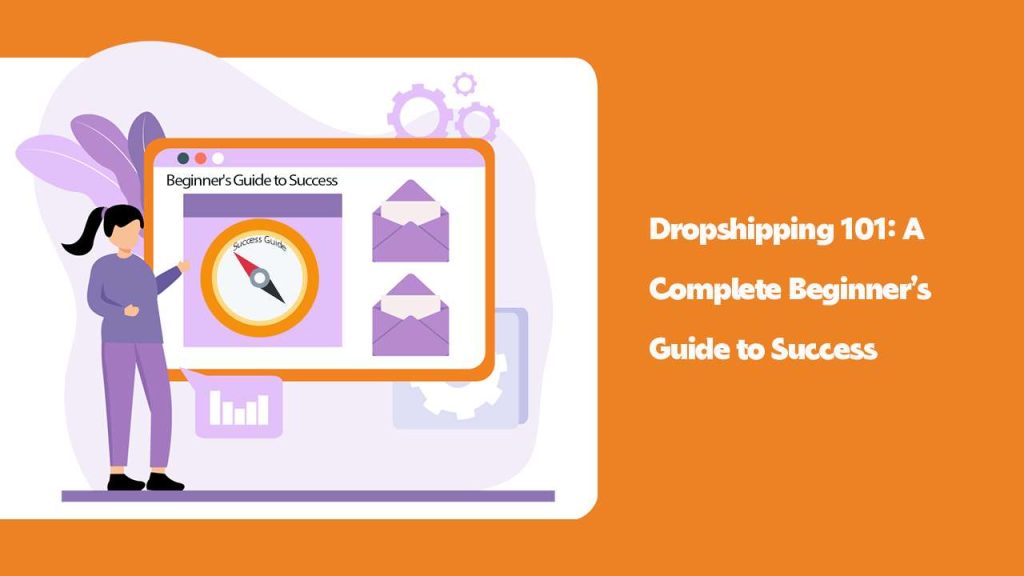Dropshipping 101: A Complete Beginner’s Guide to Success is your essential roadmap to understanding and implementing a successful dropshipping business model. Whether you’re a complete novice or looking to refine your existing knowledge, this comprehensive guide will walk you through everything you need to know about starting, operating, and scaling a dropshipping business in today’s competitive e-commerce landscape. Ready to embark on your dropshipping journey? Let’s dive in.
1. What is Dropshipping and Why is it Popular for New Entrepreneurs?
Dropshipping represents a retail fulfillment method where store owners don’t maintain inventory. Instead, when a customer places an order, the store purchases the item from a third-party supplier who ships it directly to the customer. This business model eliminates the need for inventory management, warehouse space, and upfront product investments.
The fundamental difference between dropshipping and traditional retail lies in inventory ownership. Traditional retailers purchase inventory upfront and manage storage, whereas dropshippers only purchase products after securing a sale.
Recent statistics highlight dropshipping’s remarkable growth trajectory. In 2025, the global dropshipping market is projected to reach $557.9 billion, representing a compound annual growth rate of 28.8% since 2020. But here’s the kicker – despite this impressive growth, the market is far from saturated, with new niches and opportunities emerging constantly.
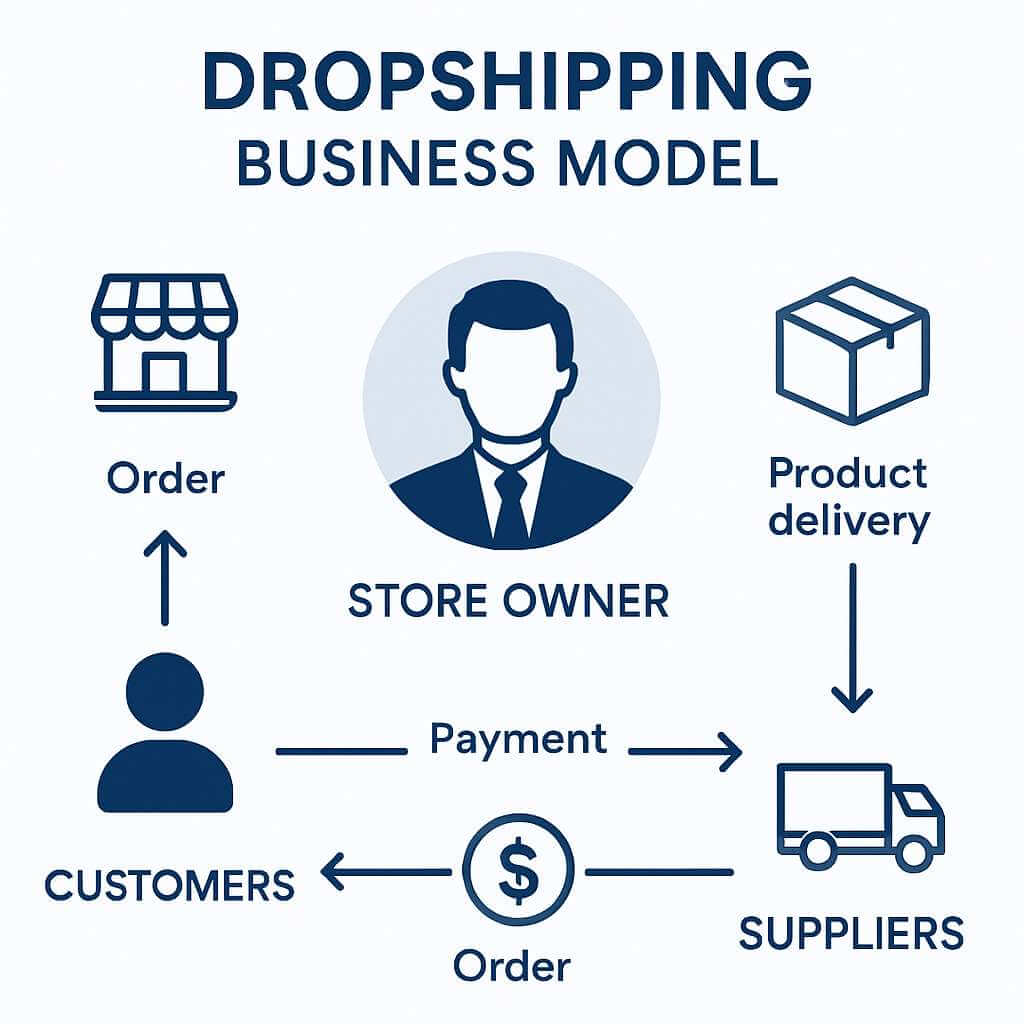
For beginners, dropshipping offers several compelling advantages. The minimal startup costs allow entrepreneurs to launch businesses with limited capital. The model provides location independence, enabling operation from anywhere with internet access. Additionally, dropshipping offers tremendous flexibility in product selection, allowing store owners to test various products without inventory risk.
| Key Dropshipping Statistics 2025 | |
|---|---|
| Global Market Value | $557.9 billion |
| Annual Growth Rate | 28.8% |
| Average Startup Cost | $150-$300 |
| Profit Margin Range | 15%-45% |
2. How Does the Dropshipping Business Model Actually Work?
The dropshipping process follows a straightforward workflow that connects three key parties: the customer, the store owner (you), and the supplier. When a customer visits your online store and places an order, you receive payment for the product at your retail price. This is where it gets interesting – instead of shipping from your inventory, you forward the order details and wholesale payment to your supplier, who then packages and ships the product directly to your customer.
The relationship dynamics between these three parties form the foundation of successful dropshipping. As the store owner, you serve as the crucial middleman, handling marketing, customer acquisition, and service. The supplier manages inventory, packaging, and shipping logistics.
Payment processing in dropshipping involves several steps. When customers make purchases, they pay your retail prices. You then pay your suppliers the wholesale cost, with the difference representing your profit margin. For example, if you sell a product for $50 that costs $30 wholesale, your gross profit is $20 before accounting for operating expenses like marketing and platform fees.
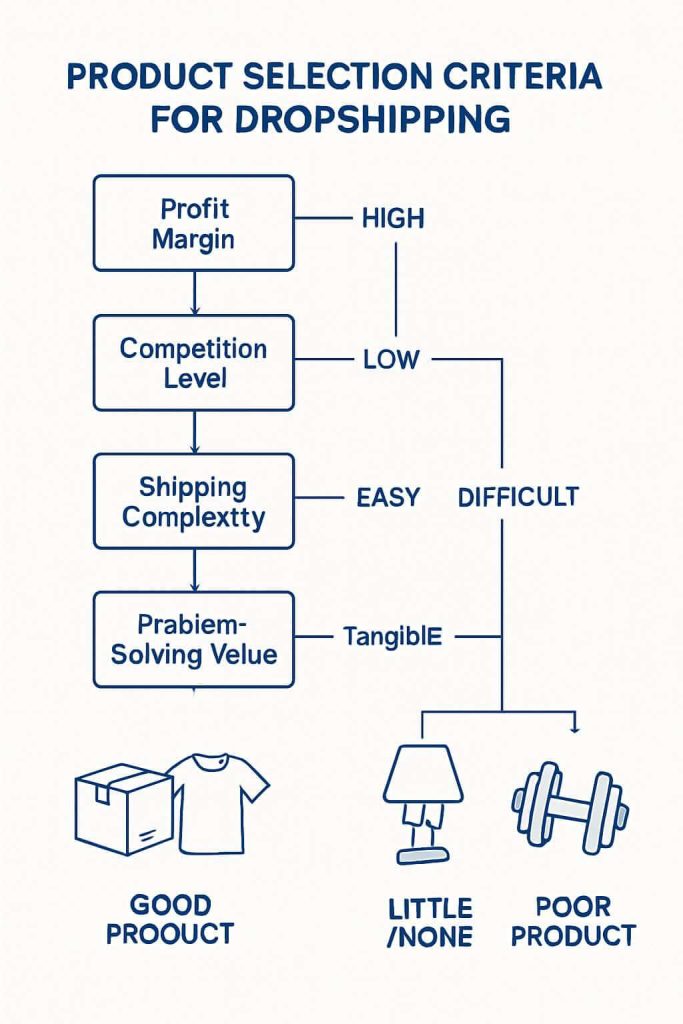
What’s the real story behind dropshipping success? Many newcomers misunderstand critical aspects of the model. A common misconception is that dropshipping requires zero work – in reality, while inventory management is eliminated, successful dropshipping demands significant effort in marketing, customer service, and supplier relationship management.
| Dropshipping Process Flow | |
|---|---|
| Step 1 | Customer places order on your store |
| Step 2 | You receive payment at retail price |
| Step 3 | You forward order to supplier with wholesale payment |
| Step 4 | Supplier ships product directly to customer |
3. What Are the Pros and Cons of Starting a Dropshipping Business?
Starting a dropshipping business offers several compelling advantages that make it an attractive option for new entrepreneurs. The minimal upfront investment stands out as perhaps the most significant benefit – you can launch a store without purchasing inventory, drastically reducing financial risk. Location independence represents another major advantage, allowing you to operate your business from anywhere with reliable internet access.
But here’s the reality check – dropshipping isn’t without significant challenges. Lower profit margins compared to traditional retail models mean you’ll typically earn less per sale, necessitating higher sales volume for substantial income. Shipping complexities present another major hurdle, as products often ship from different suppliers with varying processing times, potentially creating customer service challenges.
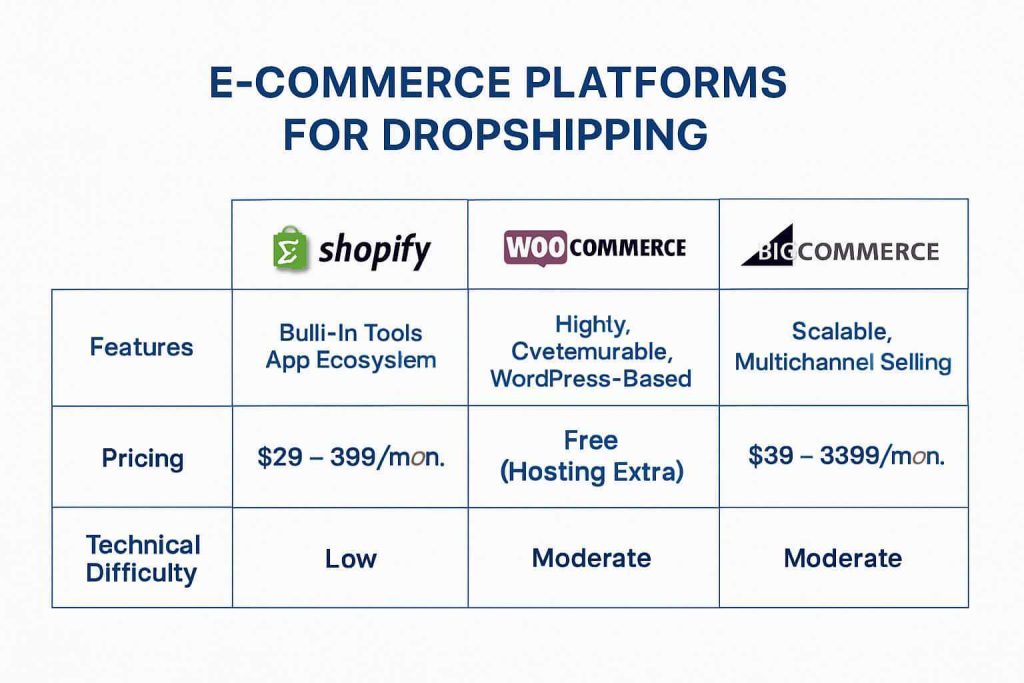
Supplier dependency introduces vulnerability to your business, as inventory issues, quality control problems, or shipping delays are largely outside your direct control. Competition in popular dropshipping niches has intensified, making differentiation increasingly difficult without unique value propositions.
This business model is ideally suited for individuals with strong marketing skills, as customer acquisition represents the primary challenge in dropshipping success. Those with limited marketing experience or capital for advertising may struggle to generate sufficient traffic and conversions.
| Dropshipping Suitability Assessment | |
|---|---|
| Ideal For | Marketers, Side-hustlers, Digital nomads |
| Less Suitable For | Those needing high margins, Control-focused entrepreneurs |
| Required Skills | Digital marketing, Customer service, Supplier negotiation |
4. How Do You Find the Right Products to Sell in Your Dropshipping Store?
Product selection represents perhaps the most crucial decision in your dropshipping journey. Effective product research combines methodical analysis with market intuition. Begin by exploring trending product tools like Google Trends, social media platforms, and specialized services such as Ecomhunt or Sell The Trend.
When evaluating product potential, apply specific criteria to identify winners. Demand analysis should reveal consistent or growing interest rather than fleeting trends. Competition assessment helps determine market saturation – moderate competition often indicates validated demand without overwhelming barriers to entry. Margin analysis is critical; ideal products maintain at least a 30% profit margin after accounting for product cost, shipping, and marketing expenses.
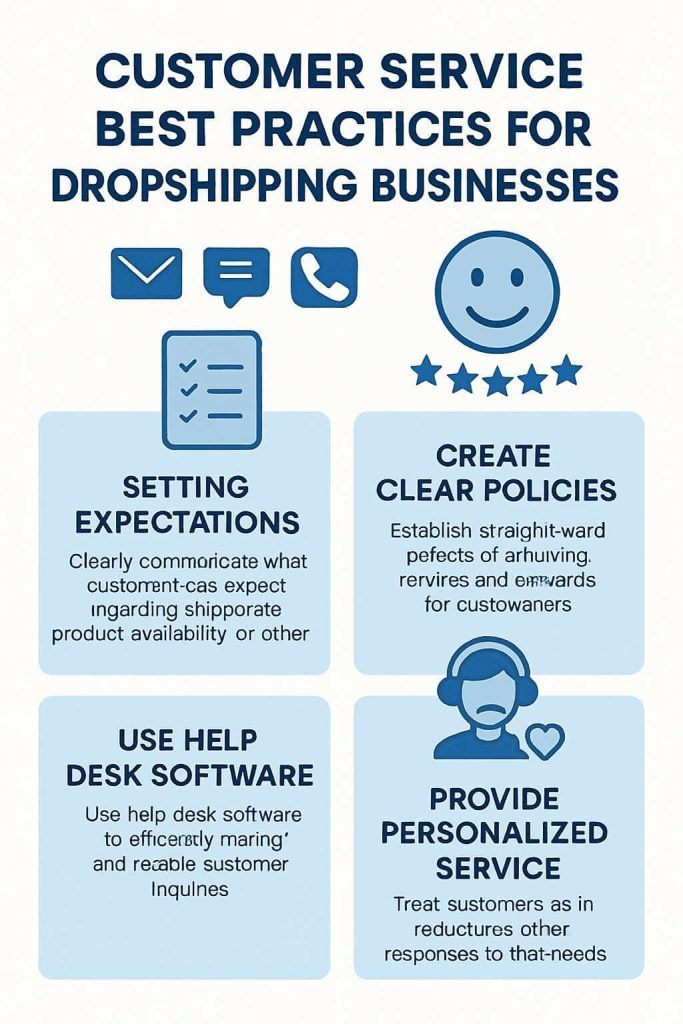
This is where it gets interesting – certain product categories consistently outperform others in the dropshipping model. For 2025, trending categories include eco-friendly home goods, wellness and self-care products, smart home devices, personalized items, and outdoor/adventure gear.
Equally important is recognizing products to avoid as a beginner. Steer clear of highly regulated items like supplements or cosmetics, which may require special certifications. Products with complex sizing requirements, such as clothing, often lead to higher return rates. Extremely fragile items risk damage during shipping, while products with very low price points (<$10) typically can’t sustain profitable margins after marketing costs.
| Product Evaluation Matrix | Poor Fit | Moderate Fit | Excellent Fit |
|---|---|---|---|
| Profit Margin | <15% | 15-30% | >30% |
| Competition Level | Saturated | Moderate | Emerging niche |
| Shipping Complexity | Heavy/Fragile | Moderate | Light/Durable |
| Problem-Solving Value | Minimal | Moderate | High |
5. How Can You Identify and Partner with Reliable Suppliers?
Finding trustworthy suppliers forms the backbone of a successful dropshipping operation. Suppliers generally fall into two main categories: domestic and international. Domestic suppliers typically offer faster shipping times, better communication, and higher product costs. International suppliers, particularly those from manufacturing hubs like China, often provide significantly lower product costs but with extended shipping times and potential communication challenges.
When evaluating supplier reliability, implement a systematic assessment process. Begin by ordering sample products to verify quality firsthand. Response time serves as a critical indicator – reliable suppliers typically respond to inquiries within 24-48 hours. Review their shipping methods and timeframes, ensuring they align with your customer expectations.
Communication strategies significantly impact supplier relationships. Establish clear expectations regarding order processing times, quality standards, and problem resolution procedures from the outset. Regular check-ins maintain relationship momentum, while respectful, professional communication builds mutual respect.
Several red flags warrant immediate caution when vetting suppliers. Unusually low prices compared to market standards often indicate quality issues or hidden fees. Reluctance to provide samples suggests potential quality concerns. Poor communication, particularly during initial interactions, typically worsens after partnership formation.
| Supplier Comparison: Domestic vs. International | ||
|---|---|---|
| Factor | Domestic Suppliers | International Suppliers |
| Shipping Time | 2-5 days | 10-30 days |
| Product Cost | Higher | Lower |
| Communication | Easier | Potential barriers |
| Quality Control | More consistent | More variable |
6. What Platform Should You Choose to Launch Your Dropshipping Store?
Selecting the right e-commerce platform provides the foundation for your dropshipping business. Several platforms dominate the market, each with distinct advantages. Shopify leads with dropshipping-specific features, extensive app ecosystem, and user-friendly interface, though its monthly fees and transaction costs can impact profitability. WooCommerce offers greater customization flexibility and lower recurring costs, but requires more technical knowledge and separate hosting arrangements.
This is where it gets interesting – beyond the popular options, specialized platforms like BigCommerce, Wix eCommerce, and Squarespace also offer viable alternatives with varying feature sets and pricing structures. Your selection should align with your technical abilities, budget constraints, and specific business requirements.
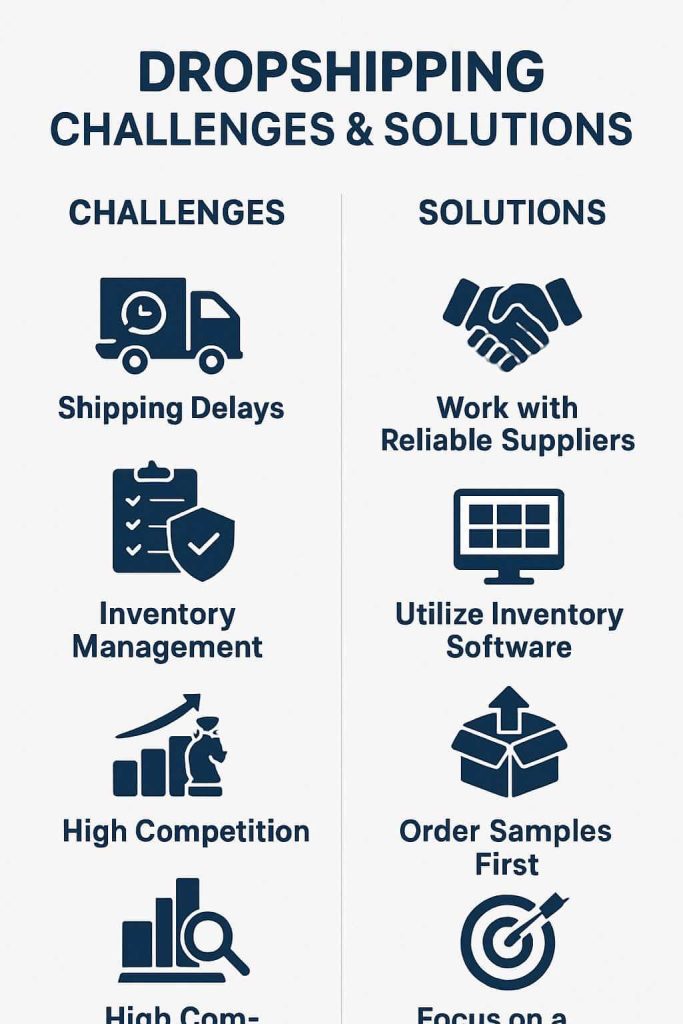
When evaluating platforms, prioritize several key features. Seamless supplier integration capabilities streamline order processing and inventory management. Mobile responsiveness ensures optimal customer experience across devices. Payment gateway variety accommodates diverse customer preferences. Scalability supports business growth without platform migration.
The cost structure varies significantly across platforms. Beyond monthly subscription fees, consider transaction fees, app costs, theme expenses, and potential developer fees for customization. A comprehensive cost analysis should project expenses across various sales volumes to determine the most economical option for your specific situation.
| E-commerce Platform Comparison | |||
|---|---|---|---|
| Platform | Monthly Cost | Transaction Fees | Technical Difficulty |
| Shopify | $29-$299 | 0.5%-2% | Low |
| WooCommerce | $0 (+ hosting) | Payment processor only | Medium-High |
| BigCommerce | $29.95-$299.95 | None | Low-Medium |
7. How Do You Set Up Your Dropshipping Store for Maximum Conversions?
Creating a high-converting dropshipping store requires strategic implementation of essential elements. Every successful store needs comprehensive pages that build trust and facilitate purchases. Beyond product pages, include an about page highlighting your brand story, detailed shipping information setting realistic expectations, clear return policies, and accessible contact information.
Product descriptions represent critical conversion factors. But here’s the kicker – effective descriptions go beyond basic specifications to create emotional connections and address specific customer pain points. Implement a consistent formula: begin with an attention-grabbing headline, follow with benefit-focused content rather than mere features, include social proof elements like reviews, and conclude with strong calls-to-action.
Pricing strategy significantly impacts both conversion rates and profitability. While competitive pricing matters, avoid the race to the bottom that erodes margins. Instead, consider value-based pricing that reflects the total customer experience you provide. Bundle pricing, offering complementary products together at slight discounts, can increase average order value while providing perceived value.
Mobile optimization has transitioned from advantage to requirement, with over 70% of e-commerce traffic now coming from mobile devices. Ensure your store implements responsive design, features large, touch-friendly buttons, maintains fast loading speeds, and simplifies checkout processes for smaller screens.
| Conversion Rate Optimization Checklist | |
|---|---|
| Trust Elements | Security badges, reviews, testimonials, clear policies |
| Visual Appeal | High-quality images, consistent branding, clean layout |
| User Experience | Intuitive navigation, fast loading, simplified checkout |
| Persuasive Content | Benefit-focused descriptions, social proof, scarcity elements |
8. What Marketing Strategies Work Best for New Dropshipping Businesses?
For new dropshipping businesses with limited budgets, strategic marketing becomes essential for gaining traction without excessive spending. Several cost-effective channels offer particular value during the startup phase. Content marketing through blogs, videos, and guides establishes authority while targeting relevant keywords. Email marketing builds direct customer relationships with minimal costs beyond platform fees.
This is where it gets interesting – social media marketing offers particularly powerful opportunities for dropshipping products. Instagram’s visual nature makes it ideal for showcasing product aesthetics and lifestyle applications. TikTok’s algorithm can rapidly amplify creative product demonstrations to relevant audiences. Facebook’s detailed targeting capabilities allow precise audience segmentation based on interests and behaviors.
Email marketing automation creates systems that nurture customer relationships throughout their journey. Abandoned cart sequences recover potential lost sales by reminding customers of items left unpurchased, often offering small incentives to complete transactions. Post-purchase sequences build loyalty through order confirmations, shipping updates, and follow-up satisfaction checks.
Content marketing establishes authority while addressing customer questions throughout their buying journey. Educational blog posts targeting relevant keywords improve organic visibility while demonstrating expertise. Product comparison guides help customers make informed decisions while positioning your offerings favorably.
| Marketing Channel Effectiveness for Dropshipping | ||
|---|---|---|
| Channel | Cost Level | Best For |
| Content Marketing | Low-Medium | Long-term organic growth |
| Social Media (Organic) | Low | Brand awareness, community building |
| Email Marketing | Low | Customer retention, repeat sales |
| Influencer Marketing | Medium | Product demonstrations, social proof |
9. How Can You Effectively Handle Customer Service in Dropshipping?
Customer service presents unique challenges in dropshipping due to the limited control over fulfillment processes. Setting realistic expectations from the outset prevents many potential issues. Clearly communicate shipping timeframes on product pages, checkout processes, and order confirmations. Provide tracking information whenever possible, even if basic.
Comprehensive policies regarding returns, refunds, and exchanges establish clear guidelines for both customers and your team. Consider whether customers should return products to you or directly to suppliers. Determine who bears return shipping costs under various circumstances. Ready for the good part? Well-crafted policies actually increase purchase confidence by demonstrating your commitment to customer satisfaction.
Several tools and systems streamline customer service management. Help desk software centralizes communications across channels, maintaining conversation history and assigning responsibility. Chatbots handle common questions, providing immediate responses while reducing team workload. Order tracking integrations allow customers to check shipping status without contacting support.
Strategic customer service can transform from cost center to competitive advantage. Personalized communications build emotional connections that transcend transactional relationships. Surprise upgrades or small gifts create memorable experiences that generate positive reviews and referrals.
| Customer Service Response Templates | |
|---|---|
| Shipping Delay | “Thank you for your patience. Your order has been slightly delayed due to [specific reason]. We’re working with our shipping partner to expedite delivery and expect it to arrive by [date]. We’ve added a 10% discount code for your next purchase as appreciation for your understanding.” |
| Product Question | “Thank you for your interest in [product]! [Answer specific question]. If you have any other questions about this or any other products, please don’t hesitate to ask. We’re here to help you find exactly what you need.” |
| Return Request | “We’re sorry to hear the product didn’t meet your expectations. Our return process is simple: [outline steps]. Once we receive the return, we’ll process your refund within 2 business days. Is there anything specific about the product that didn’t work for you? This helps us improve our offerings.” |
10. What Are the Most Common Challenges in Dropshipping and How to Overcome Them?
Shipping delays represent perhaps the most pervasive challenge in dropshipping, particularly when working with international suppliers. To mitigate this issue, implement several strategic approaches. Set realistic delivery expectations from the outset, clearly communicating timeframes on product pages and during checkout. Consider offering shipping insurance for valuable items, providing customers with additional security.
Inventory management presents unique difficulties when you don’t physically control stock. This is where it gets interesting – several techniques can minimize these challenges. Implement automated inventory syncing tools that regularly update product availability based on supplier data. Establish relationships with backup suppliers for popular products, ensuring fulfillment options if primary suppliers face stockouts.
Product quality issues can damage reputation when occurring remotely. Preventative measures include ordering samples before listing products, establishing clear quality standards with suppliers, and implementing quality control agreements. When issues arise, respond promptly with customer-friendly resolutions that prioritize satisfaction over minor costs.
High competition in popular niches necessitates differentiation strategies. Focus on specific sub-niches with less competition but sufficient demand. Develop value-added content that educates customers beyond basic product information. Bundle complementary products to create unique offerings unavailable from competitors.
| Common Dropshipping Challenges and Solutions | |
|---|---|
| Challenge | Strategic Solutions |
| Shipping Delays | Clear communication, shipping insurance, contingency plans |
| Inventory Management | Automation tools, backup suppliers, evergreen product focus |
| Quality Control | Pre-listing samples, supplier agreements, prompt resolution |
| High Competition | Niche specialization, value-added content, product bundling |
FAQ Section
Q1: What is the minimum budget needed to start a dropshipping business?
You can technically start a dropshipping business with as little as $100-$300, which would cover basic expenses like domain registration ($10-15/year), a starter e-commerce platform subscription ($29/month for Shopify Basic), and minimal marketing costs. However, a more realistic budget of $500-$2,000 provides greater flexibility for product testing, marketing experiments, and absorbing initial learning costs.
Q2: How long does it typically take to make the first sale in dropshipping?
The timeline to first sale varies significantly based on multiple factors including niche selection, marketing approach, and budget allocation. Some dropshippers achieve their first sale within days of launch, particularly when leveraging existing audiences or implementing paid advertising. More typically, new dropshippers might wait 2-4 weeks for their first sale while building initial traffic and optimizing their store.
Q3: Can I run a dropshipping business part-time while keeping my day job?
Yes, dropshipping is well-suited for part-time operation, especially during the startup phase. The business model eliminates time-intensive tasks like inventory management and order fulfillment, allowing you to focus available hours on strategic activities like marketing and customer service. Many successful dropshippers begin part-time, allocating 10-15 hours weekly to building their business while maintaining financial stability through employment.
Q4: What are the biggest mistakes new dropshippers make and how can I avoid them?
New dropshippers commonly make several critical mistakes: choosing oversaturated niches with intense competition; underestimating marketing requirements and costs; selecting unreliable suppliers without proper vetting; setting unrealistic profit expectations; and neglecting customer service quality. Avoid these pitfalls by conducting thorough market research before niche selection, creating realistic marketing budgets, and implementing comprehensive supplier verification processes.
Q5: Is dropshipping still profitable in 2025 with increasing competition?
Dropshipping remains profitable in 2025 despite increased competition, but success requires more strategic approaches than in previous years. The most profitable operations now focus on specialized niches rather than general markets, emphasize brand building over pure product selling, implement omnichannel marketing strategies, and add unique value through content, community, or exceptional service.

